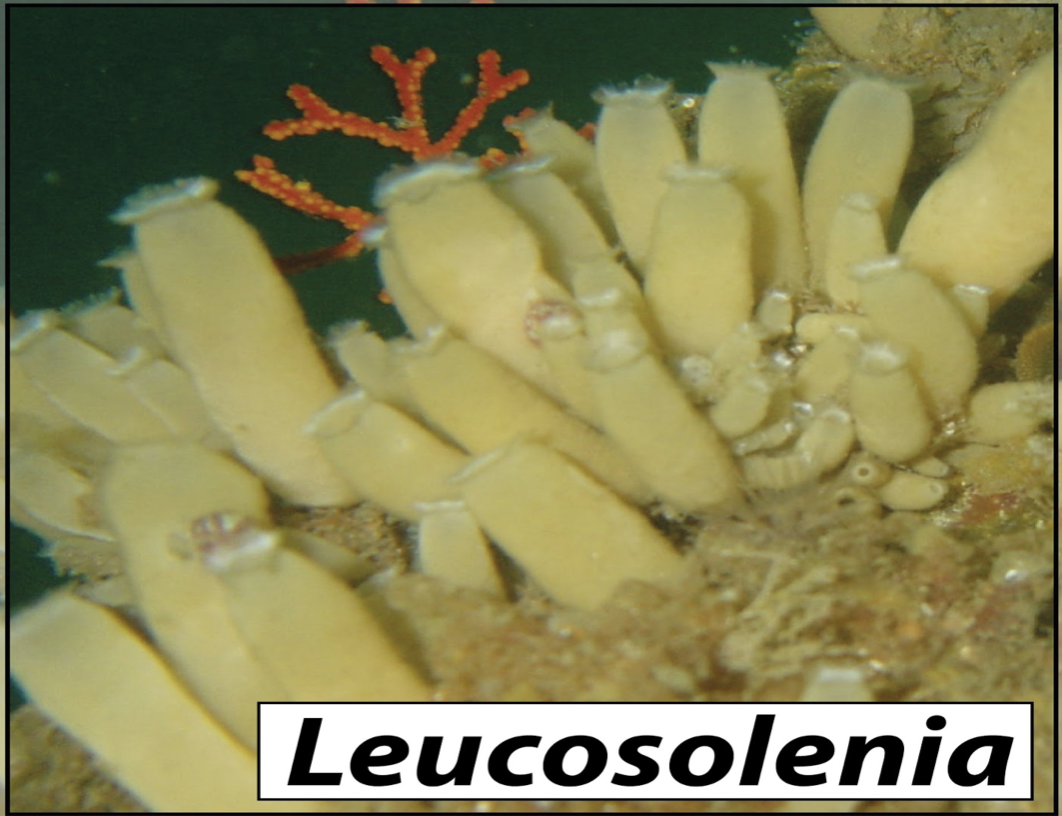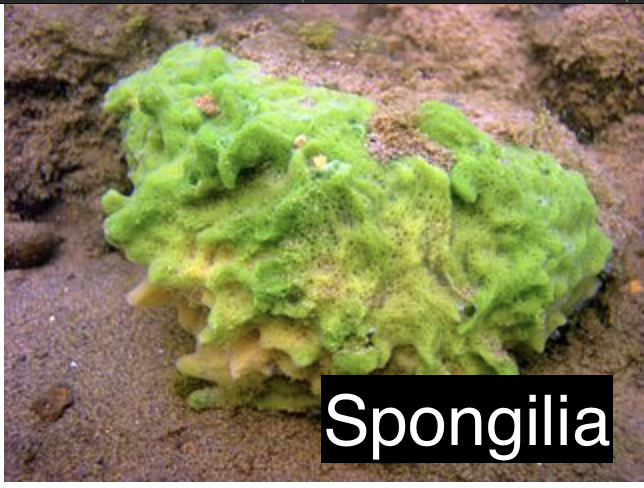
Which of the following have porous body and are diploblastic
(a) Aurelia and Obelia
(b) Adamis and Euplectella
(c) Leucosolenia and Spongilia
(d) Sycon and Hydra
Answer
472.5k+ views
Hint: The phylum porifera consists of members which have porous bodies and are diploblastic. Porifera are the simplest invertebrate animals with no symmetry and live in water all over the world.
Complete step by step answer:
Leucosolenia and Spongilia are the most primitive animals on the earth. They belong to Phylum Porifera which means pore- bearing as their sac- like body is perforated by many pores. They are sessile in nature and depend on water current to bring food and oxygen but although in their larval form they are motile. The sponge body is an efficient water filter. The leucosolenia and spongilla are diploblastic and even the body wall of adult sycon is formed of two layers that are the dermal layer or pinacoderm and gastral layer or choanoderm.


Additional Information:
- Sponges are considered to be multicellular but having no tissues or organ so each cell of their body functions independently.
- Members of porifera have a foul taste and noxious odor and also have a defensive skeleton thus they have few predators.
- The structure of sponges can be either fibrous or rigid or both.
- The fibrous part is made up of specialized collagen material called spongin. Whereas the rigid component of the sponge skeleton is made up of calcium carbonate or silicon spicules.
- Sponges have two types of body opening, small incurrent pores are known as ostia and large excurrent pores known as oscula.
- Their body walls hold radial canals that are lined with the choanocyte cells so that water is filtered before it empties into the spongocoel.
- Sponges have the ability of regeneration of lost parts and repair injuries forms new structures called somatic embryogenesis.
- Sponges shows asexual which includeds regenration and budding also shows sexual reproduction.
- In sexual reproduction most sponges are monecious with both male and female sex cells in one individual.
- Some sponges release both oocytes and sperm out into the water as external fertilization.
So, the correct answer is ‘(c) Leucosolenia and Spongilia.’
Note:
- In Phylum Porifera all are maries animals except members of the family of spongillidae which includes spongilla are freshwater sponges.
- Leucosolenia also known as orange pipe sponge is a small asconoid sponge grown in colonies.
Complete step by step answer:
Leucosolenia and Spongilia are the most primitive animals on the earth. They belong to Phylum Porifera which means pore- bearing as their sac- like body is perforated by many pores. They are sessile in nature and depend on water current to bring food and oxygen but although in their larval form they are motile. The sponge body is an efficient water filter. The leucosolenia and spongilla are diploblastic and even the body wall of adult sycon is formed of two layers that are the dermal layer or pinacoderm and gastral layer or choanoderm.


Additional Information:
- Sponges are considered to be multicellular but having no tissues or organ so each cell of their body functions independently.
- Members of porifera have a foul taste and noxious odor and also have a defensive skeleton thus they have few predators.
- The structure of sponges can be either fibrous or rigid or both.
- The fibrous part is made up of specialized collagen material called spongin. Whereas the rigid component of the sponge skeleton is made up of calcium carbonate or silicon spicules.
- Sponges have two types of body opening, small incurrent pores are known as ostia and large excurrent pores known as oscula.
- Their body walls hold radial canals that are lined with the choanocyte cells so that water is filtered before it empties into the spongocoel.
- Sponges have the ability of regeneration of lost parts and repair injuries forms new structures called somatic embryogenesis.
- Sponges shows asexual which includeds regenration and budding also shows sexual reproduction.
- In sexual reproduction most sponges are monecious with both male and female sex cells in one individual.
- Some sponges release both oocytes and sperm out into the water as external fertilization.
So, the correct answer is ‘(c) Leucosolenia and Spongilia.’
Note:
- In Phylum Porifera all are maries animals except members of the family of spongillidae which includes spongilla are freshwater sponges.
- Leucosolenia also known as orange pipe sponge is a small asconoid sponge grown in colonies.
Recently Updated Pages
Master Class 11 Accountancy: Engaging Questions & Answers for Success

Express the following as a fraction and simplify a class 7 maths CBSE

The length and width of a rectangle are in ratio of class 7 maths CBSE

The ratio of the income to the expenditure of a family class 7 maths CBSE

How do you write 025 million in scientific notatio class 7 maths CBSE

How do you convert 295 meters per second to kilometers class 7 maths CBSE

Trending doubts
Which are the Top 10 Largest Countries of the World?

Differentiate between homogeneous and heterogeneous class 12 chemistry CBSE

What is a transformer Explain the principle construction class 12 physics CBSE

Draw a labelled sketch of the human eye class 12 physics CBSE

What is the Full Form of PVC, PET, HDPE, LDPE, PP and PS ?

How much time does it take to bleed after eating p class 12 biology CBSE




